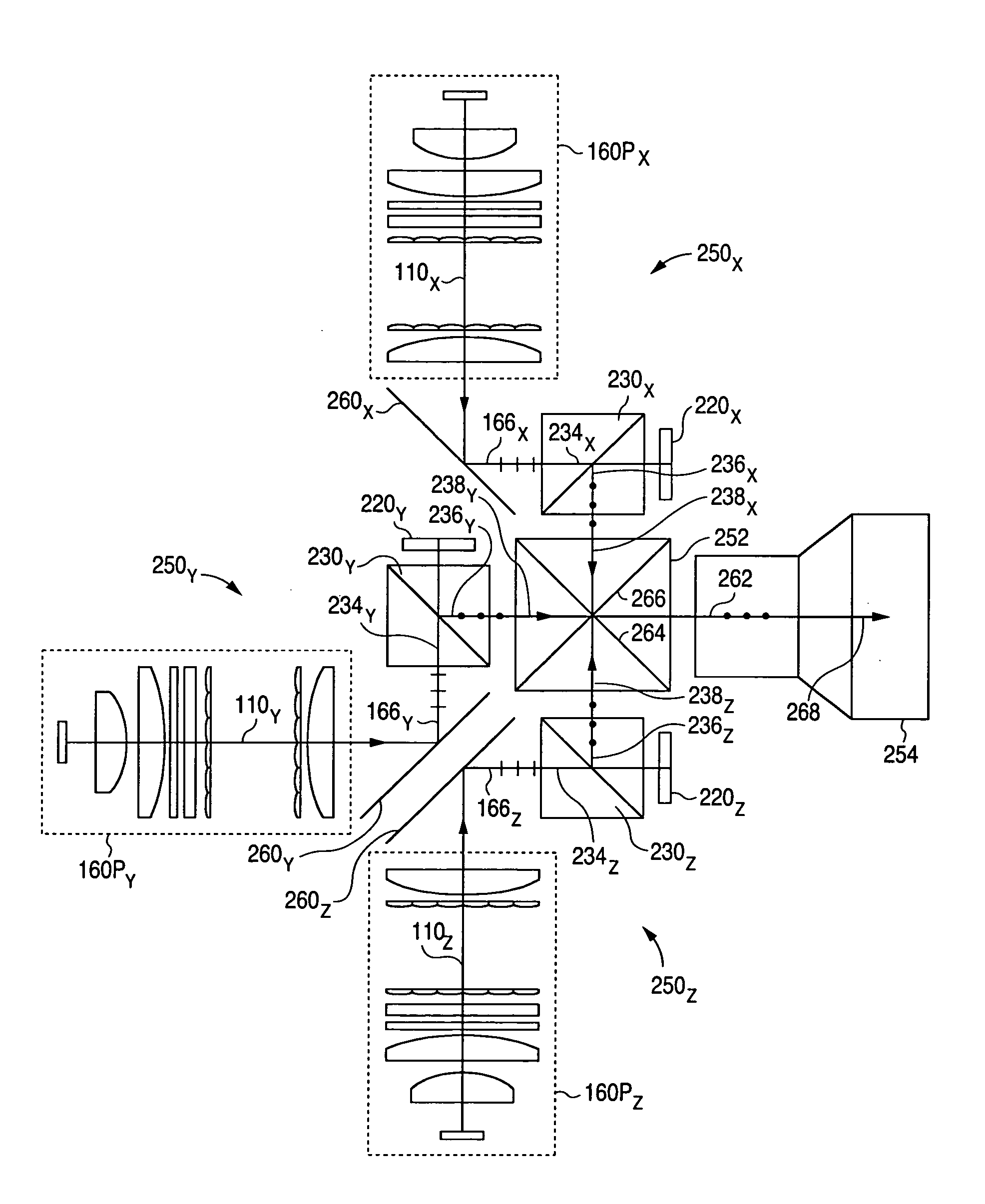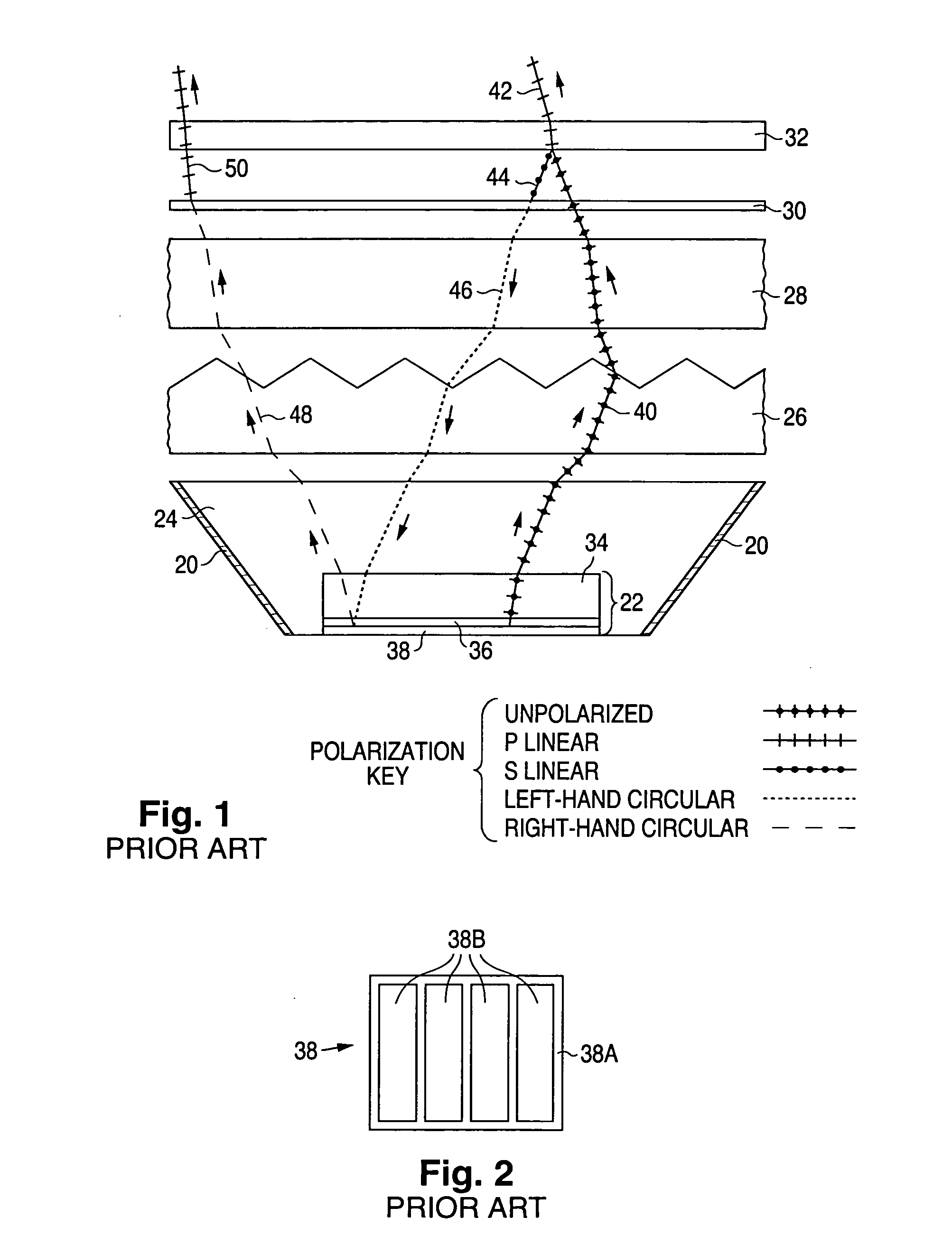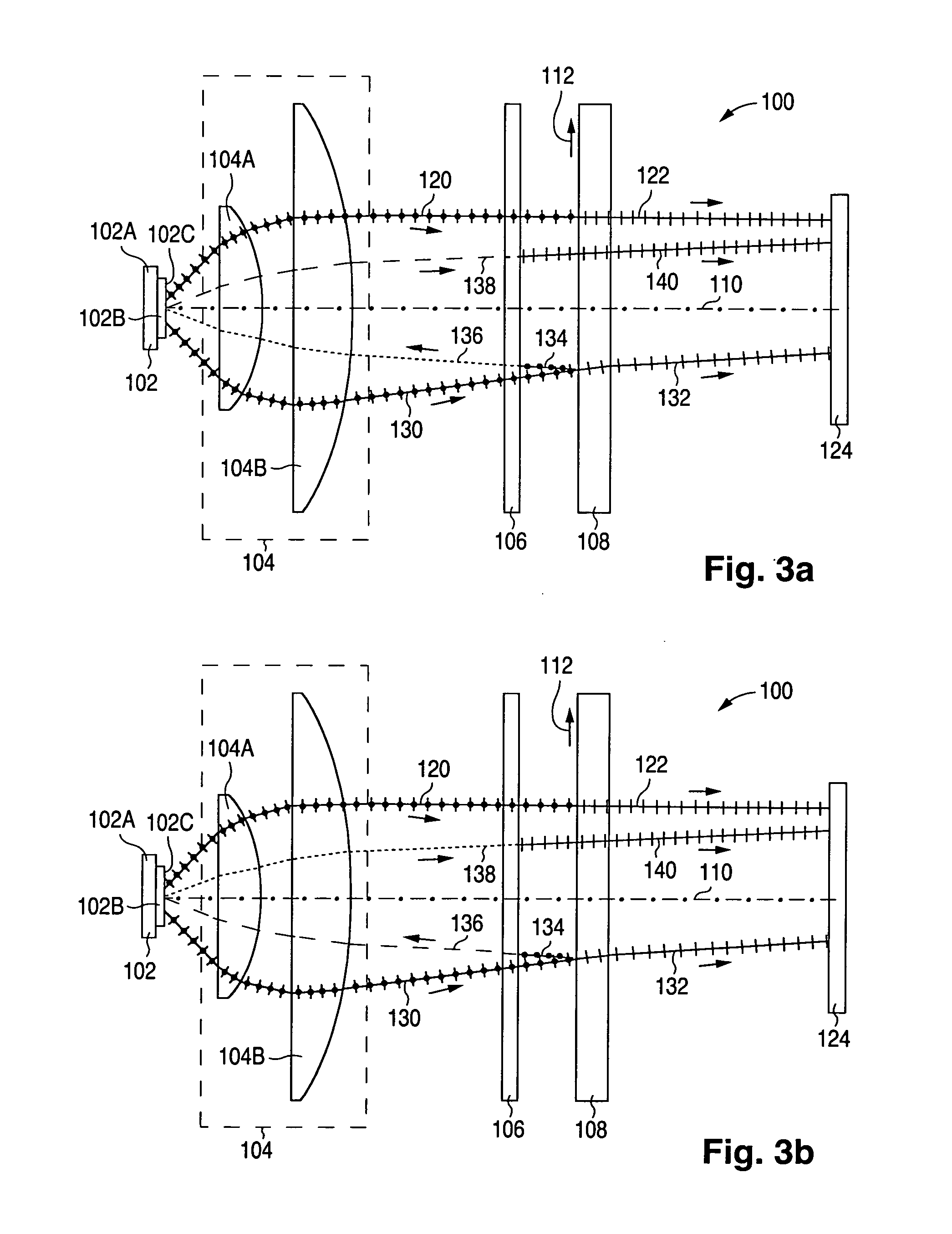Illumination system and method with efficient polarization recovery
- Summary
- Abstract
- Description
- Claims
- Application Information
AI Technical Summary
Benefits of technology
Problems solved by technology
Method used
Image
Examples
Embodiment Construction
[0045]FIG. 3a illustrates a polarization-recovery illumination system 100 configured in accordance with the invention for providing linearly polarized light. Illumination system 100 consists of a light-reflective light source 102, a light collimator 104, a quarter-wave retardation plate 106, and a light-reflective linear polarizer 108 positioned sequentially along a system optical axis 110 as shown in FIG. 3a. In particular, collimator 104 is situated in front of light source 102, retardation plate 106 is situated in front of collimator 104, and polarizer 108 is situated in front of retardation plate 106.
[0046]Light source 102, which has high brightness and high luminous output, consists of a substrate 102A and a light emitter 102B having a light-reflective surface 102C which serves as a light reflector. Light emitter 102B, which is mounted on substrate 102A, emits unpolarized visible light that travels away from substrate 102A. Light reflector 102C is mounted on substrate 102A. Lig...
PUM
 Login to View More
Login to View More Abstract
Description
Claims
Application Information
 Login to View More
Login to View More - R&D
- Intellectual Property
- Life Sciences
- Materials
- Tech Scout
- Unparalleled Data Quality
- Higher Quality Content
- 60% Fewer Hallucinations
Browse by: Latest US Patents, China's latest patents, Technical Efficacy Thesaurus, Application Domain, Technology Topic, Popular Technical Reports.
© 2025 PatSnap. All rights reserved.Legal|Privacy policy|Modern Slavery Act Transparency Statement|Sitemap|About US| Contact US: help@patsnap.com



